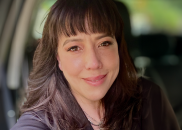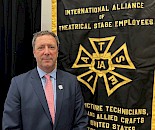
MEMBER SPOTLIGHT Q&A: NAMOWAN KIRBY ON CELEBRATING INDIGENOUS PEOPLES DAY
Namowan Kirby is a non-status Ojibway member of the IATSE 891 Grips Department. He’s worked in the film industry for 15 years with credits that include ‘Shōgun’, ‘The Art of Racing in the Rain’, and ‘Dawn of the Planet of the Apes’. He is also a screenwriter and one of the founders of Tatus Creative — an organization amplifying Indigenous artists, actors, background actors, producers and directors to advance authentic representation and inclusion of Indigenous peoples in the arts and entertainment industries.
June 21st marks Indigenous Peoples Day in Canada, and in this Member Spotlight Q&A, we ask Namowan about his experiences as an Indigenous filmworker, what excites him most about the industry right now, and how he’d like to see union members celebrate Indigenous Peoples Day as allies.
1. WHAT DREW YOU INTO A CAREER IN THE MOTION PICTURE INDUSTRY?
I'm grateful for this opportunity to share my story. When I was 16 years old, I was greatly inspired and moved by the National Film Board of Canada’s Richard Cardinal: Cry from a Diary of a Métis Child — a documentary film by Alanis Obomsawin. For the first time in my life, I was brought to tears watching a film about a Native adoptee just like me. Born in Winnipeg, I was adopted a few days after I was born in the summer of 1974. My adoptive parents worked in the arts. One was a textile artist, and the other was an arts administrator. My birth family is from the communities of Selkirk and Peguis, but I grew up far away in Ottawa. My best friend in kindergarten was adopted too, and they were from the North. We were some of the first Native children at our school. I'm certain my life would have turned out very differently had it not been for that friendship early on. Many years later I found out that he was working as a stunt person in Toronto.
In high school, one of my classmates was Zoe Leigh Hopkins. She's now a successful director and worked on the award-winning show Little Bird. We've connected a few times over the years. Upon finishing high school, I attended the Summer Institute of Film and Television, and I sat beside Jennifer Podemski. Dance Me Outside, which she was in, had just come out. I remember being so inspired sitting beside her. At the time I didn't think there was much of a chance of me having a career in film because most of the people at that Summer Institute were white. I was grateful for the experience though, and one of the people in a screenwriting workshop I participated in was Sudz Sutherland. He was a student at York University at the time. I remember being very impressed with how he carried himself and his professionalism and thorough understanding of story and organizational skills as a writer. A decade and a half later, he was one of the first people to welcome me on to a proper film set in Toronto. I had the pleasure of working with him last year when he was in Vancouver directing an episode of the series Alert: Missing Persons Unit. I was driving an electric camera vehicle and thinking, I made it, I'm here, I made a career of this, and I’m so thankful to these people who were supportive or inspiring.
I've always been blown away with the capacity for film to help people, for healing, and to get people motivated into certain conversations — whether they're difficult or significant. It always stood out to me that I haven't seen stories like mine up on screen. There's a long history of poor representation of Native people on screen in TV and film. Most of it has been horrible, and it’s shaped the public's perception of Native people and how Native people are treated. The imagery that was in early film and TV takes shape in people's jokes or bullying and a lot of the stuff I experienced in my childhood. I find myself thinking, maybe I can contribute to the representation of people like me on screen. That's a huge motivation for me as a writer. I would love one day to be able to have the resources and the means and the skillset to effectively tell a story that's never been told before about adoption...mine! There are a lot of Native stories that have come up over the last 30 to 40 years, but there's still many to be told, and it means something to see yourself up on screen, or to see people like the people that you know and their stories in the format of a short, a limited series, or a documentary, or a film.
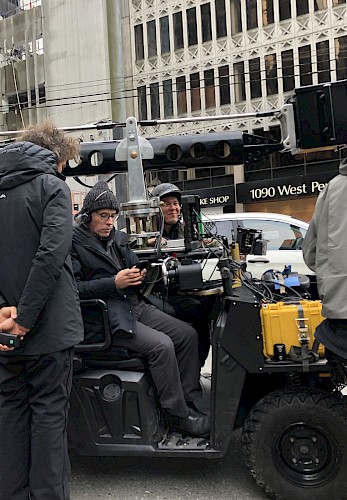
Namowan driving Mexican cinematographer and film director Rodrigo Prieto around during a shoot
2. WHAT DO YOU LOVE MOST ABOUT WORKING IN THE GRIPS DEPARTMENT RIGHT NOW?
It was through the Grips Department that I felt maybe I can break into filmmaking. I was interested in writing and had applied to the Canadian Film Centre and I wasn't accepted for their program, but knew I really want this and told myself I'm going to make it happen by believing in myself and working on developing my skills. In the Grips Department, you can wear different hats. You can be the person moving sandbags and lifting ladders and laying dolly tracks, or you could be the person operating the dolly or the camera crane. After a few years, my area of focus shifted to driving camera vehicles. I was given an opportunity on Warcraft to do a few shots with an electric camera vehicle. It's not dolly gripping, but it's very similar, as you're moving the camera with a jib arm through space and time, with actors and movement, and a lot of stuff going on. It requires a calm mind and sometimes involves stunt driving. You're hyper aware of safety. There could be people, horses, kids, bikes, camera cranes flying through the air, or smoke, or explosions, and you don't want anyone to get hurt.
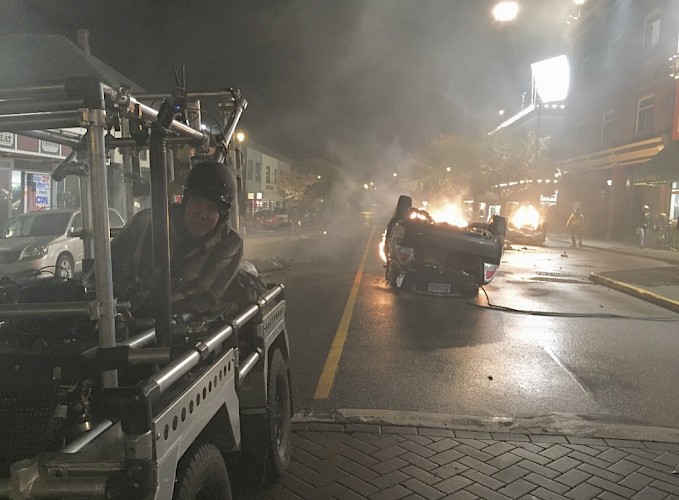
Namowan on the set of 'Sonic the Hedgehog'
There are some shots on Deadpool 2 that I did. One of my favourites would be when Ryan Reynolds is running down Cambie Street in Vancouver after his character’s girlfriend is murdered. He's running down the street in the rain and the camera is very close behind him. That's me driving! There's no credit for that in the credits, but people know I did it. It was so much fun. There's rain towers dumping and he takes off running in his bodysuit and I'm holding the frame and it's just a moment, but to be able to calm my mind and be able to focus and get that shot feels good. My previous experience in music and deejaying helps. I used to travel all over the world as the deejay for Red Planet (Detroit) and I developed ears that can tune into the sound of a room or different frequencies. On set, I'm watching actors, or horses, or vehicles, or camera marks, or whatever I need to observe with my eyes, but I'm also listening to the sound of the wheels, the tyres, the velocity of what I'm driving. I remember one shot that I did years ago. It was in a warehouse, and they had yellow delineator lines on and these gigantic posts for forklifts and these VFX things flying through the aisles. Driving a camera vehicle with all this smoke atmosphere and lights, I could barely see the yellow marks of the pathway. I knew that if I'm holding the steering wheel straight and just doing what I need to do for the shot, everything is going to be fine, but I was also listening to the sound. Sound becomes important to be able to do things safely.
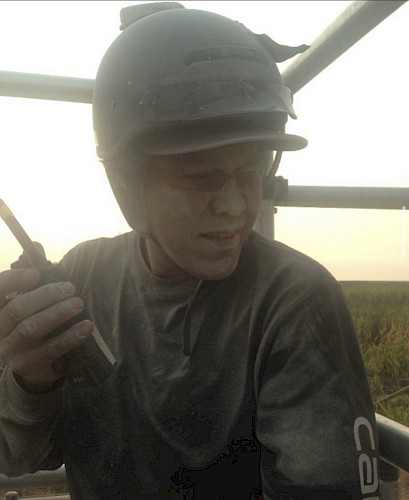
For the last couple years, I've been focusing on dolly gripping. When I first started, I was not really interested in it. I thought it was boring being stuck on set all day. It seemed too draining and not fulfilling, but I do enjoy it now. With the ever-changing elements of the film industry, being resilient and able to adapt is so important. My life experience has given me those skills of resilience and adaptability, as someone who grew up Native at a time when there weren’t a lot of Native people in public schools, and I had to deal with bigotry and racism and prejudice. These days, I'm excited when the heads of departments are people who wouldn't normally be in those positions and doors are being broken open. It took me seeing people like myself to inspire me, and whether they're Korean, or from Jamaica, or from my community, it's really cool to be around a greater diversity of folks and be part of the ever-changing face of the industry, and to see it become a place where we can express ourselves professionally and where we're welcomed and acknowledged for our gifts.
3. HOW CAN UNION MEMBERS HONOUR INDIGENOUS PEOPLES DAY MEANINGFULLY?
I would like for union members to ask themselves, when was the last time they walked up to an Indigenous person on set and acknowledged them, thanking them for being there? That’s not something that's common, but it's something that folks should ask themselves. Is it a conversation? No, it's not. Sometimes it doesn't have to be a dialogue. It doesn't have to be a conversation. It doesn't have to be a Native person absolving someone of their guilt towards Native people or answering a question about Indigeneity. It's meaningful to have a non-Native person acknowledging someone with, “It's great to see you here,” or acknowledging Indigenous members not in a sensational way, but in a way that says, “You are welcome here!” Whether to a senior member, or someone who is new, or even just a background person who is just there for one day, I've had exchanges with people that echo all of that. It means so much to hear, “I see how hard you are working, and I acknowledge you.” That’s what I would want for union members to reflect on going into Indigenous Peoples Day.
When people talk about colonialism and genocide, it's a huge achievement and a reality that we're still here. The other thing I’d say is don’t go overboard with asking too many questions about our culture or assuming Indigenous cultures are all the same. We don't sing the same songs. We don't have the same beliefs. Asking a coastal Indigenous person about Ojibway culture doesn’t make sense. It's like asking someone from Pakistan what people in Bengal are thinking. It's a little bit preposterous.
4. HOW DO YOU CELEBRATE INDIGENOUS PEOPLES DAY ON JUNE 21ST?
Summer solstice is one of my favourite times of the year. It’s always a grounding day for me, and that's how I celebrate it. There are many pow wows and cultural activities over the year that are important for Native people, but for me personally, I observe solstice as a seasonal reset in terms of the year and in terms of welcoming good things, which is undeniable when you have more light. I'm definitely aware of the dark, but it's also important to celebrate the light.
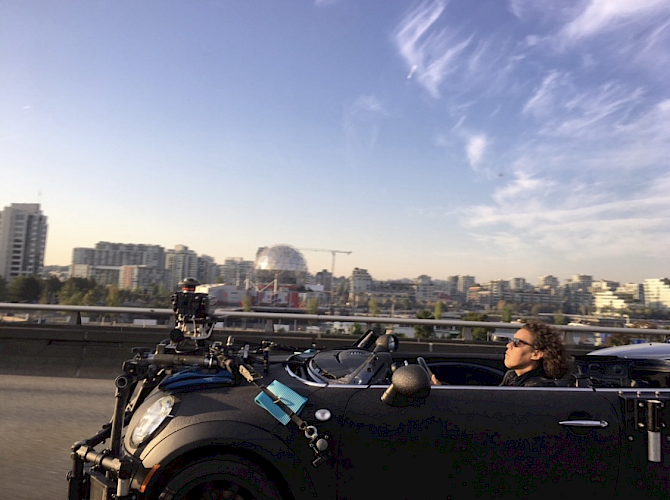
5. WHAT’S BEEN YOUR EXPERIENCE WORKING IN FILM AS AN INDIGENOUS UNION MEMBER?
Times are certainly changing. I recently worked as a dolly grip on back to back shows with two of the biggest Native actors at the moment in non-conventional roles: Joel Oulette (Trickster) as the singing and dancing son of Robin Hood in Descendents: Wicked Wonderland and Amber Midthunder (Prey) as yet another badass female character in Season 2 of Monarch: Legacy of Monsters.
I am excited to be seeing more and more Native people on set — whether it's a production assistant (PA), or an actor, or another film technician — but there's also a lot of people who are Native in the film industry who may not necessarily acknowledge themselves as Native. It's a reflection of society or how they grew up. Maybe their grandparents or parents existed at a time when it wasn't in their best interest to identify as Indigenous. Sometimes I get into a conversation with someone and they say, “Hey, did you know that my mom's this? Or my dad's this?” and maybe they've never mentioned it before and it's so bittersweet when those moments happen.
These personal histories that people have with their Indigeneity, it is a part of who they are as a Native person and who they are as a film technician. I love it when it's so apparent that people are being who they're meant to be, and you can tell in the look in their eye that they're comfortable. As someone wanting to make it a better place for other Native people, our numbers and having us simply there is a tremendous achievement.
On a show recently, there was an Indigenous PA who was helping people park cars. I was so excited to see him and made a point about making a connection with him. Seeing him working on set was enough to make me smile. It’s exciting to see where he goes. Maybe next year that person's working in the Lighting department. The presence of Native people on set is significant and it’s interesting to see the kinds of productions that are getting made now and what will become of the film and TV industry in years to come. Native stories aren't going anywhere, Native people aren't going anywhere, and it just stands to reason that with more and more skilled storytellers and people working on set that more Native stories will see the light of day.
I feel very optimistic and am seeing more people representing themselves with confidence and with respect. For many that’s meant finding a space for yourself in places that maybe you are not necessarily welcome in to begin with, but here you are, you're claiming it, and I think that's the shift that I've noticed in my lifetime. I personally love when other Native people are on set and we get a chance to share our Native humour out in the open!
6. WHAT’S ONE CHANGE YOU’D LIKE TO SEE IN THE MOTION PICTURE INDUSTRY?
As a Native person and as an adoptee, I’m no stranger to oppression, no stranger to bullying and racism and bigotry, and going through a professional or a personal interaction with somebody and being ready for anything at any moment. For people to be prepared or equipped with the communication skills or the mental health capacity to deal with uncertainty or anxious and stressful situations, which can happen in this industry, that’s an area where I would really hope to see an improvement. As someone who's adopted, there's a certain fluency that I have with dealing with hurtful or horrible people. There's a way sometimes to accept where someone's at, and you can keep your interactions with someone limited, knowing that the face of the industry is changing.
Years ago, I was receiving a camera vehicle trailer late at night at a yard outside of Maple Ridge. It was a dark wooded area with these gigantic trees. The driver dropping off the trailer shows up, hops out of their truck, walks towards me, and looks me up and down like someone in a movie who's about to beat somebody up. He gives me a really rude look. Then he steps a couple of inches from my face, and says, “Are you Indian?” Those were his words. I extend my hand to get some personal space. I smile and I say, “My name is Namowan. I'm Ojibway.” He was not expecting a nice introduction from me.
I'm proud of how I handled myself and it’s the result of my life experiences as someone who's been in difficult environments and knows you either become a bully too, or you find other ways to manoeuvre. My communication skills, and efforts to try and connect with people, and see them for who they are, and hopefully have them see me for who I am, has proven really valuable. It doesn't come easy. This was a very serious situation, but I chose not to be completely dry in dealing with this person. I wanted to show love when this person's showing hate. Understand that this is coming from a lifetime of similar experiences from teachers to people in positions of authority. So many people have experienced the exact same thing. It’s just a fact of life of being a Native person in the city — we have to learn how to carry ourselves. I don't want to be someone who gets locked up, incarcerated, or shot just for speaking my truth.
What I really feel is that my presence on a film set, in my being as respected as I am within the industry here in Vancouver, has significance and impact. Simply being here is a huge accomplishment and a tremendous change. So when I think of how can others change their actions? It's not so much their actions. It's about making space for us.
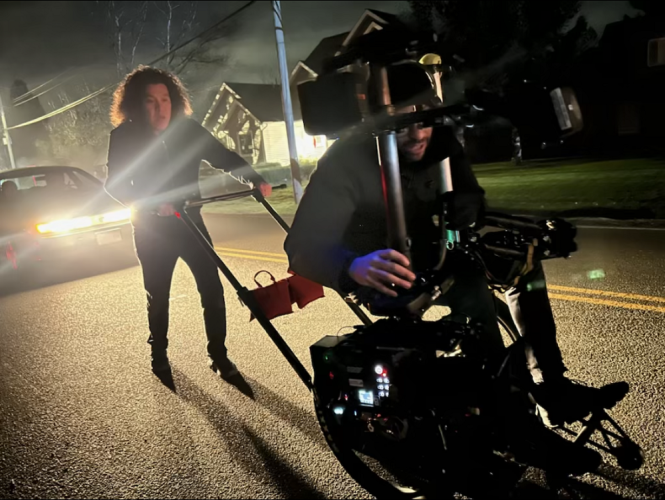
Namowan working with cinematographer Leonardo Harim
7. WHAT’S YOUR ADVICE FOR PEOPLE WANTING A CAREER IN MOTION PICTURE PRODUCTION?
My career has not been without its setbacks. Be patient, because it can be difficult to get tangible results in your career right away. Some positions require dedication and unrelenting confidence and belief and never giving up. The first script that I ever wrote was a feature about a Native graffiti artist in Winnipeg. I applied to the Canadian Film Centre and I wasn't accepted. A few years ago, I was selected for the Whistler Film Festival's Indigenous Filmmaker Fellowship with an Indigenous Sci-Fi series about a secret society of time travelling seers. Over the years, I've kept at it, learning, workshopping, and accepted the slow nature of developing stories. When you think doors are closing, maybe it's because the time isn't right for you. Maybe you've got to develop your people skills, or whatever it is that you need to be able to sell yourself as an artist, an employee, or a technician.
As a creative, as a writer, to be able to have a deeper understanding of film production through getting more experience on set helps. You may have lofty ideas, but they’ll never get made because it's just too expensive or it's just too many details that don't make sense on a production level. So having more experience as a dolly grip impacts me as a creative and as a writer. We just wrapped Descendants: Wicked Wonderland, and I was so grateful to be brought on board and that I got to learn from one of the best camera operators that's ever worked in Vancouver. Steven Adelson worked on Batman Begins. That crazy shot where Batman drops down a staircase with hundreds of bats flying everywhere, that’s Steve on a cable flying down capturing that shot. He’s more of a producer and director now but cut his teeth as a steady cam operator. Sometimes in film, or in life, you're building towards something without really realizing just how much you're being prepared. Bit by bit. Of course you make mistakes. Not every shot is going to be perfect, but it's about constantly learning and refining your process through working with others who have excelled or gotten to a place where things become very easy for them because of their experience and command of the art form.
The last thing I’ll say is be humbled to learn. Don’t put yourself in a situation where you've said you know how to do something when you really don't. It's wrong to put yourself in a safety scenario on a film set with a lift or potentially dangerous machinery and you don't have the experience. Approach everyday with the attitude that I'm going to learn something.
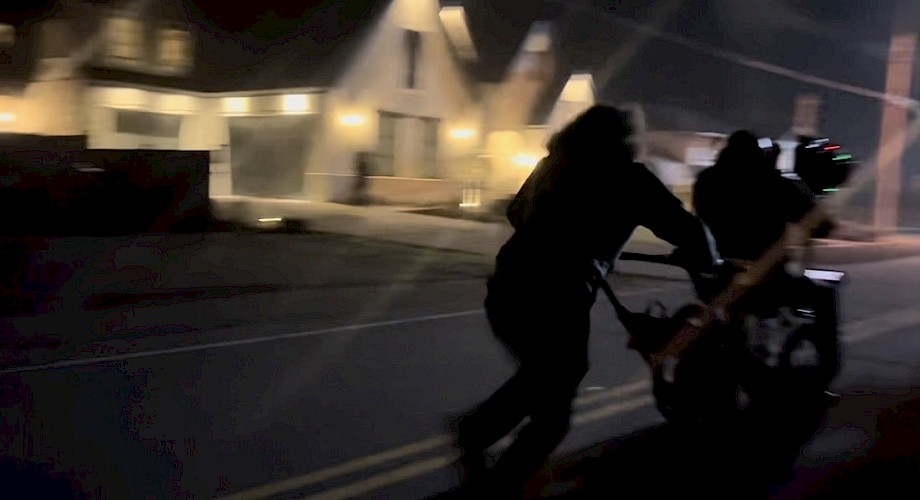
Interview and editing by 891 Copywriter Claudia Goodine
Thank you to Namowan Kirby for sharing his story and insights. This Q&A has been edited for length.
Are you an Indigenous 891 member interested in being interviewed for a Member Spotlight? Email communications@iatse.com!
Learn more about working in the film industry in BC by checking out more 891 Member Spotlights here! Visit Ourwork.ca for more on the benefits of joining the Union.





